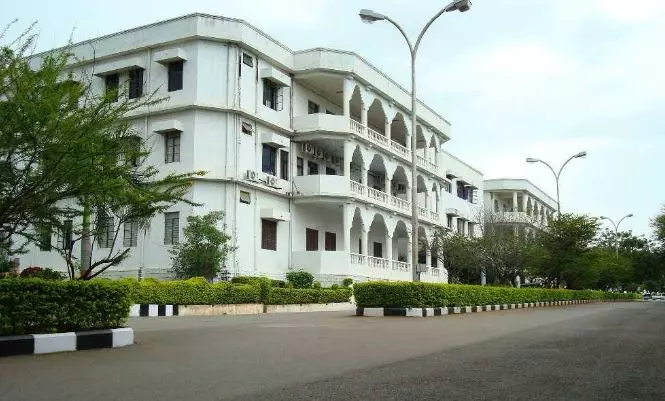AI Can’t Replace Vision In Cinema: Experts
Tech can’t replace vision in cinema: Experts

Hyderabad:Filmmaking might be entering its most unpredictable phase, but the future will still need a director with a vision and a team that knows how to tell a story.
That was the message from producers and researchers alike at the TechForward seminar on “Technology and Cinema” hosted at IIIT Hyderabad on Monday, where Baahubali producer Shobu Yarlagadda and director of IIIT Hyderabad Prof. P. J. Narayanan shared insights on how cinema is being altered by new tools, faster processes and changing creative economies. The session, part of a research series by HYSEA and IIIT-H, looked at how artificial intelligence, game engines, cloud workflows and open-source software are altering both the means and the economics of storytelling.
Shobu Yarlagadda, co-founder of Mihira Visual Labs and producer of Baahubali, called AI an enabler, not a shortcut. “Just because you have the tools doesn’t make you a writer,” he said. He compared the current chatter around AI replacing artists to past anxieties about word processors replacing authors. “You still need passion. Otherwise, it’s all just noise,” he explained.
As an example of what’s possible when tech and imagination meet halfway, he pointed to Flow, a Latvian animated film created by a team of under 35 people using Blender and a handful of AI tools. Produced at roughly `35 crore, the film went on to win an Oscar and competed against big studio productions with budgets several times larger. “Flow is a vision of the future. Open source shows and human imagination come together to find what’s possible,” he noted. “We used to say we can’t match Hollywood because we don’t have `500 crore. That excuse is going away.”
Prof. Narayanan, director of IIIT-H and a leading computer vision researcher, offered a broader view of how visual computing has evolved. He revisited his early experiments from the 1990s, when he and his team built a multi-camera 3D capture setup using 51 black-and-white cameras, each connected to a separate videocassette recorder (VCR). “Our biggest challenge was getting all the VCRs to record at the same time,” he said. The project involved digitising each tape frame by frame to simulate a basketball match from multiple perspectives. “It was crude, but it showed us what was possible,” he explained.
Prof. Narayanan discussed the gap between what high-end cameras can do and what algorithms can simulate, especially when it comes to capturing fine human details like wrinkles or hair texture. Despite the availability of software like Blender and Maya, he stressed how much of film graphics work is still manual and labour-intensive. Even fully digital films like Toy Story take years to make, he said, not because they are simple, but because directors and creative teams demand near-perfection in every frame. “Technology has come a long way, but you still can't casually capture expressions at a quality anyone would call good,” he said.

